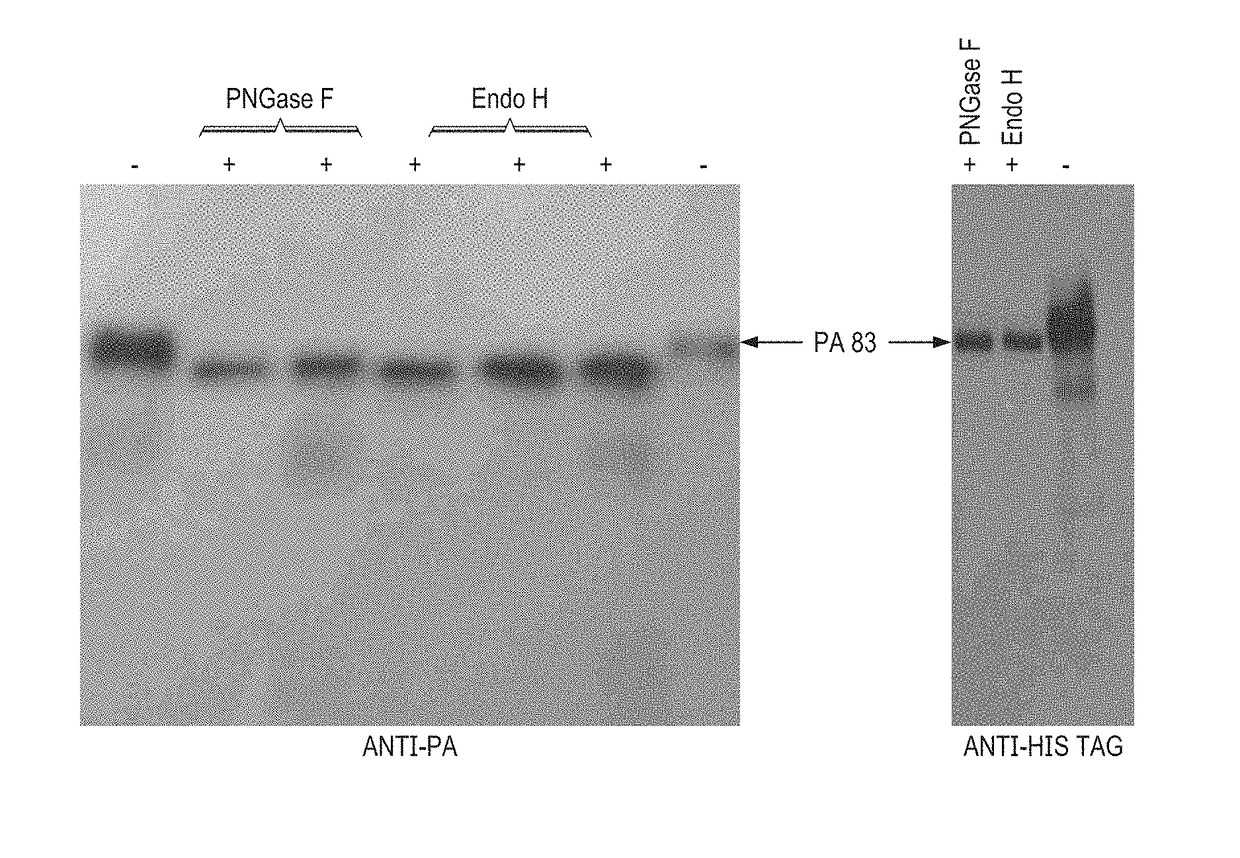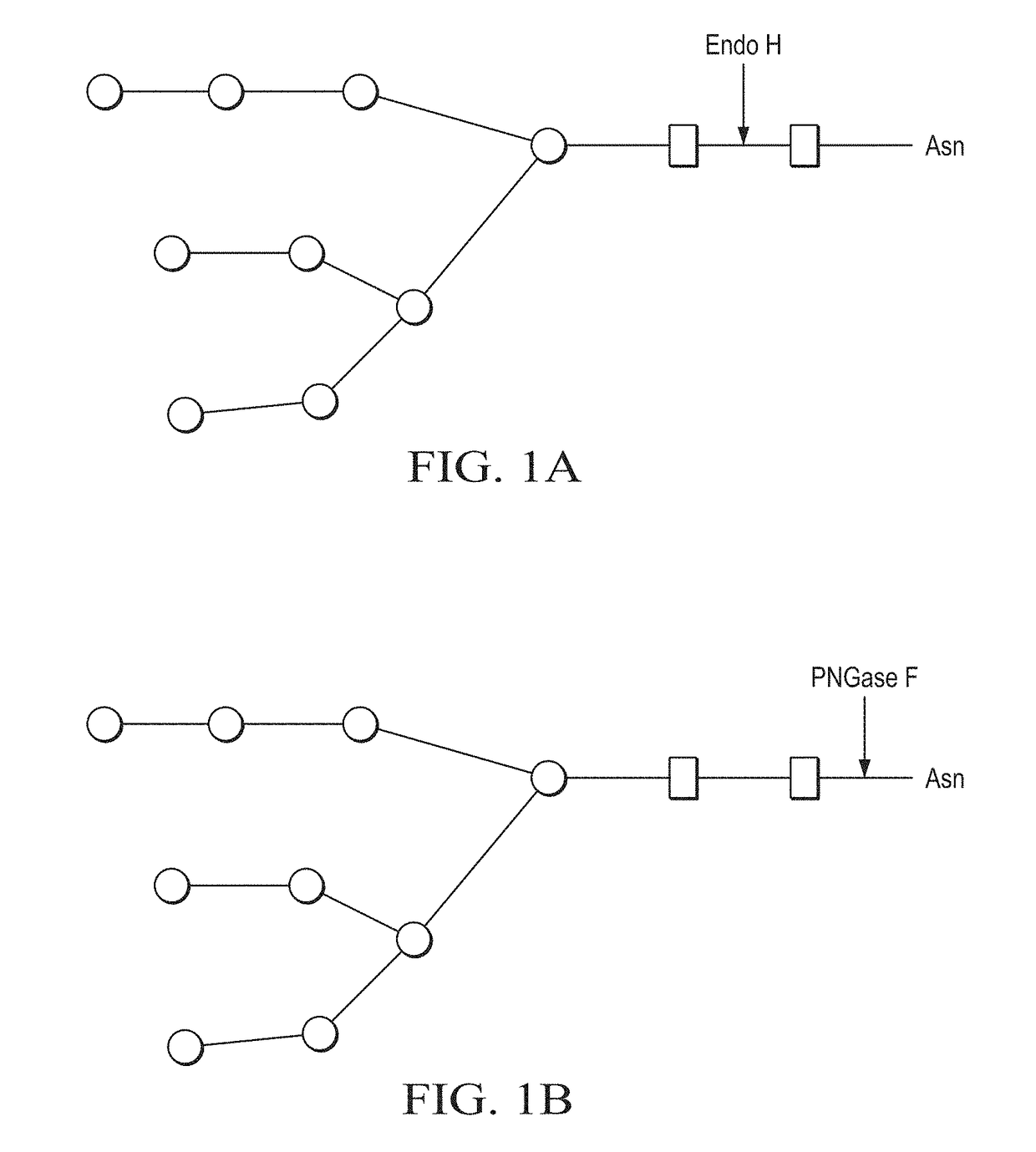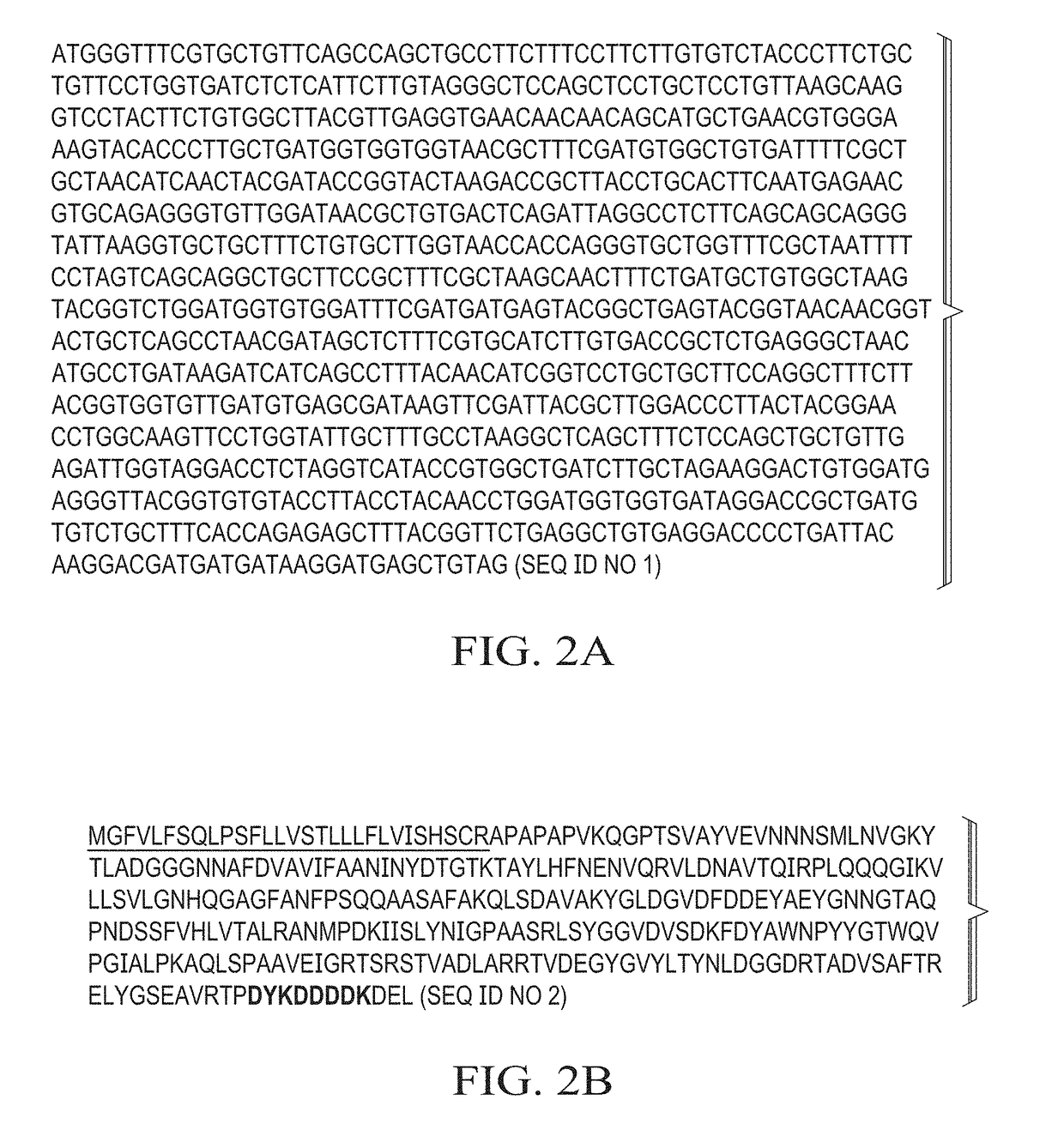Production of in vivo n-deglycosylated recombinant proteins by co-expression with endo h
a technology of ndeglycosylated recombinant proteins and co-expression, which is applied in the direction of antibacterial agents, drug compositions, antiparasitic agents, etc., can solve the problems of reducing function and immunogenicity, and the inability of plants to glycosylate proteins,
- Summary
- Abstract
- Description
- Claims
- Application Information
AI Technical Summary
Benefits of technology
Problems solved by technology
Method used
Image
Examples
example 1
and Methods
[0014]Cloning and Expression of Endo H in N. benthamiana.
[0015]The Endo H gene (GenBank accession AAA26738.1) was optimized for expression in N. benthamiana plants and synthesized by GENEART AG (Thermo Fisher Scientific). To transiently express Endo H in N. benthamiana plants, the signal peptide (amino acids 1-42) was removed from the Endo H sequence, and Nicotiana tabacum PR-1a signal peptide (MGFVLFSQLPSFLLVSTLLLFLVISHSCRA) was added to the N-terminus. In addition, the KDEL sequence (the ER retention signal) and the FLAG epitope (the affinity purification tag) were added to the C-terminus. The resulting sequence was inserted into the modified pGreen II (pGR-M) or pBI121 (Chen et al., 2003) binary expression vectors to obtain pGR-M-Endo H F and pBI-Endo H, respectively.
[0016]Cloning and Expression of PNGase F, PA83 and Pfs48 / 45 in N. Benthamiana
[0017]The sequences of PNGase F (Mamedov et al., 2012) and B. anthracis PA (amino acids 30-764, GenBank accession number AAA22...
example 5-purification
of Deglycosylated PA83 Proteins Using HisPur™ Ni-NTA Resin and Preliminary Stability Analysis of Deglycosylated PA Protein
[0023]Endo H and PNGase F co-expressed and deglycosylated forms of PA83 were purified using HisPur™ Ni-NTA Resin (ThermoFisher scientific, Cat. No. 8822). As shown by SDS-PAGE and Coomassie staining (FIG. 5A), the purified PA83 proteins were highly homogeneous. In addition, as shown by SDS-PAGE and (FIG. 5A) and the Western blot analysis, co-expression with Endo H led to the accumulation of PA83 that was similar in size to that of the in vivodeglycosylated molecule by bacterial PNGase F. To assess the affect of deglycosylation by Endo H and PNGase F on protein properties, deglycosylated forms of PA83 proteins were undergone a preliminary stability test of different forms of PA83, in the form 37° C. and 4° C. treatment and found that, Endo H in vivodeglycosylated PA83 appears to be slightly more stable compare with PNGase F glycosylated form, especially at elevate...
example 6
f Anti-PA Monoclonal Antibody to Glycosylated, Endo H or PNGase F In Vivo Deglycosylated PA83 Variants
[0024]Binding of anti-PA monoclonal antibody to glycosylated, Endo H or PNGase F in vivodeglycosylated PA83 variants were performed using IMAC purified PA83 antigens and Bacillus anthracis Protective Antigen Antibody (MA1-21675). Anti-PA antibody (anti-Bacillus anthracis protective antigen antibody, BAP0101, cat. no. ab1988, Abcam) showed similar binding to plant produced glycosylated and Endo H or PNGase F in vivodeglycosylated PA83 proteins (data not shown).
PUM
| Property | Measurement | Unit |
|---|---|---|
| Immunogenicity | aaaaa | aaaaa |
| Stability | aaaaa | aaaaa |
| Antigenicity | aaaaa | aaaaa |
Abstract
Description
Claims
Application Information
 Login to View More
Login to View More - R&D
- Intellectual Property
- Life Sciences
- Materials
- Tech Scout
- Unparalleled Data Quality
- Higher Quality Content
- 60% Fewer Hallucinations
Browse by: Latest US Patents, China's latest patents, Technical Efficacy Thesaurus, Application Domain, Technology Topic, Popular Technical Reports.
© 2025 PatSnap. All rights reserved.Legal|Privacy policy|Modern Slavery Act Transparency Statement|Sitemap|About US| Contact US: help@patsnap.com



